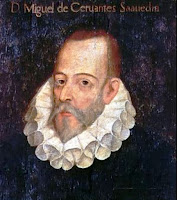Literature / Writer's Datebook: September 15
Brief biography of Dame Agatha Christie, English crime writer, creator of Belgian sleuth Poirot and elderly lady Miss Marple of St. Mary Mead.
Agatha Christie is considered the most famous of all crime writers. Her books have been translated in about 45 languages and continue to sell millions of copies worldwide. Many of them have been made into successful films and TV adaptations, among them are Murder on the Orient Express, Death on the Nile, And Then There Were None.
She is the queen of the 'whodunit' type of crime story in which the reader can puzzle out from train of clues which of the characters in the story is guilty of a murder. Her stories are known for their clever twists of plot.
Life of Agatha Christie in a Nutshell
Dame Agatha Christie was born Agatha May Clarissa Miller on September 15, 1890 in the southern coastal town of Torquay. She was privately
educated at home then went on to study music in Paris. During World War I she worked as a nurse for the Red Cross. In 1914 she married Colonel Archibald Christie and had a daughter. The couple divorced in 1928. She then remarried to archaeologist Max Mallowan and accompanied him on many trips to Syria and Iraq.
These travels gave her the setting for many of her novels.
Agatha Christie the Crime writer
Initially, she was a poet and author of children's books, until one day, challenged by her sister, in her late 20s. Aged 30, she produced her first book, The Mysterious Affair at Styles, which introduced the now famous Belgian detective Hercule Poirot. Subsequent crime novels followed.
Christie came from an upper-middle-class background, the world she mainly wrote about in her books. Her writing style is simple and her ear for dialogue is brilliant. Her stories usually involve a murder that takes place among ordinary people. Among the two most memorable fictional characters are the impeccably clean and tidy Belgian sleuth, Hercule Poirot, and the quiet but inquisitive elderly, Miss Jane Marple. Detectives Tommy and Tuppence Beresford also feature in some of her books.
Christie also wrote plays. One of these, The Mousetrap, has been performed continuously at St Martin's Theatre, West Street, London since the 1950s. The play has become the longest running show in the history of British Theatre. In 1954, Agatha Christie won the New York Drama Critics' Circle Award, and in 1971 she was made a Dame. She died on January 12, 1976, aged 85.
Agatha Christie's Legacy
Christie wrote some 80 mystery novels, plays and short stories, and her novels have sold over two billion copies in 45 languages. Unlike many of her contemporaries, Christie's novels remain current as they were when first published.
Among her plots, including And Then There Were None and Witness for the Prosecution, contain ground-breaking twists that may have been copied but never duplicated. Murder on the Orient Express was made into a star-studded blockbuster film. For her contribution to British letters, Agatha Christie was named by HM Queen Elizabeth II, a Dame of the British Empire in 1971.
"The big houses have been sold, and the cottages have been changed and converted. And people just come – and all you know about them is what they say of themselves."
Agatha Christie, A Murder is Announced
Major Works by Agatha Christie
The Mysterious Affair at Styles, 1920
The Murder of Roger Ackroyd, 1926
Murder at the Vicarage, 1930
Murder on the Orient Express, 1934
Murder in Mesopotamia,
1936
Death on the Nile,
1937
Appointment with Death, 1938
And Then There Were None, 1941
They Do It with Mirrors, 1952
The Mousetrap, 1952
The Mirror Crack'd, 1962
A Caribbean
Mystery, 1964
Endless Night, 1967
Curtain, 1975
Image Credit:
Agatha Christie. Wikimedia Commons / Free media repository.
Resources:
Goring, Rosemary, Ed. Larousse Dictionary of Writers. New York: Larousse, 1994
McGovern, Una, Ed. Chambers Biographical Dictionary. Edinburgh: Chambers / Harrap Publishers, 2002
Ousby, Ian. The Cambridge Guide to Literature in English. Cambridge: Cambridge University Press, 1993.
Payne, Tom. The A-Z of Great Writers. London: Carlton, 1997
Agatha Christie. en.wikipedia.org
(c) September 2009. Tel. Inspired Pen Web. All rights reserved.






